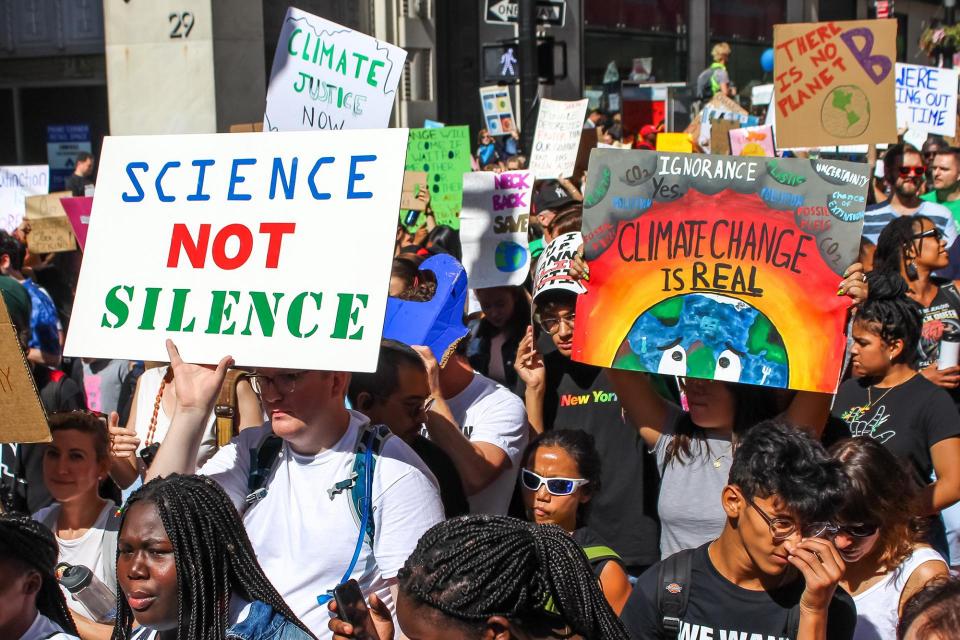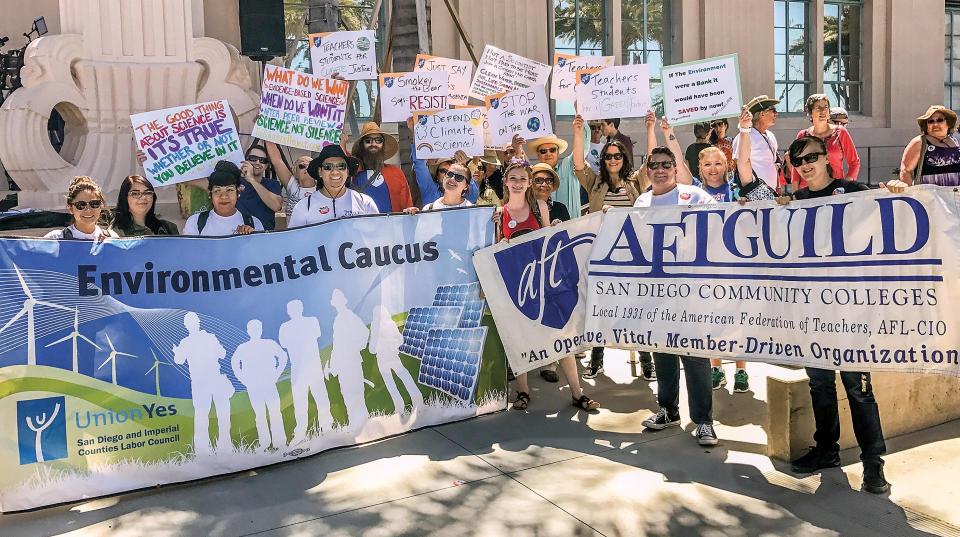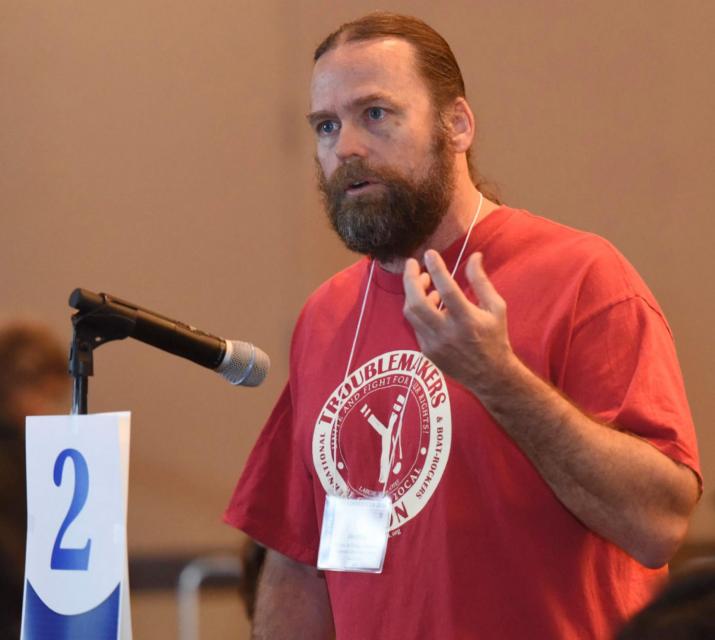By Jim Miller, AFT Guild, Local 1931
In mid-June, California got some great news in a report sponsored by a wide range of labor unions, including the CFT. A clean energy transition in our state is a realistic goal and workers do not have to be left behind to accomplish it.
In “A Program for Economic Recovery and Clean Energy Transition in California,” Robert Pollin, Jennette Wicks-Lim, Shouvik Chakroborty, Caitlyn Kline, and Gregor Semieniuk of the Department of Economics and Political Economy Research Institute at the University of Massachusetts-Amherst note that with the COVID-19 pandemic beginning to recede, our national focus should turn toward an equitable and sustainable recovery:
Both at the national level and within California, the focus of economic policy should therefore start shifting to the question of how to advance a recovery that is strong, equitable and sustainable. This study presents a recovery program for California that will also build a durable foundation for an economically robust and ecologically sustainable longer-term growth trajectory. As we emerge from the pandemic experience, we can also regain focus on the reality that we have truly limited time to take decisive action around climate change.
The program the authors present is based on the climate and emissions reductions goals set by Governors Brown’s and Newsom’s executive orders that commit the state to becoming carbon neutral by 2045, with all new cars and vehicles being zero emission by 2035.
Given the grim prospects we face if we continue with business as usual and stay on the road toward catastrophic climate change, the conclusion of the report is indeed heartening:
[A] robust climate stabilization project for California that is able to achieve the state’s established emissions reduction commitments is a realistic prospect. The climate stabilization project can also serve as a major engine of economic recovery and expanding economic opportunities throughout the state. This includes an increase of over 1 million jobs in the state through investment programs in energy efficiency, clean renewable energy, public infrastructure, land restoration and agriculture.
More specifically, the level of investment it will take to cut greenhouse gas emissions by 50% by 2030 and then reach net zero emissions by 2045 amounts to $138 billion per year in clean energy, manufacturing infrastructure, and displaced worker programs.
Find the Pollin Report and more teaching resources in our Climate Justice Toolkit.
Pollin and his team estimate that half of that could come through public funding with the other half through private investment.
On the jobs front, the report estimates that this level of investment would create an average of 418,000 jobs per year in renewable energy and energy efficiency projects, an average of 626,000 jobs per year in manufacturing, critical infrastructure upgrades, land restoration, and agriculture, and 96,000 in the public sector.
What about the 112,000 workers employed in California’s fossil fuel industry? For the oil workers who will be displaced, the report documents how a planned, steady transition off oil and gas is significantly cheaper and better for workers. This means assuring that workers at all stages of their careers have health care; that entry and mid-career workers get wage insurance, retraining, and reemployment guarantees; and that workers close to retirement get pension guarantees.
A steady closure of the fossil fuel industry would mean about 3,200 workers per year would require reemployment between 2021 and 2030 at a cost of $470 million per year for a generous just transition package. An uneven, sudden transition would cost 78% more so it will pay off to take a gradual, worker-centered approach rather than lurching toward big closure events.
The bottom line is clear: California can pull off an equitable transition that creates a net gain of jobs. If we have the political will and long term vision to do it, a sustainable future for California will also mean lots of good union jobs in clean energy industries and a better future for all of us.
Jim Miller is political action vice president for the AFT
Guild, San Diego and Grossmont-Cuyamaca Community Colleges, Local
1931. He also serves on the CFT Labor
and Climate Justice Education Committee.



